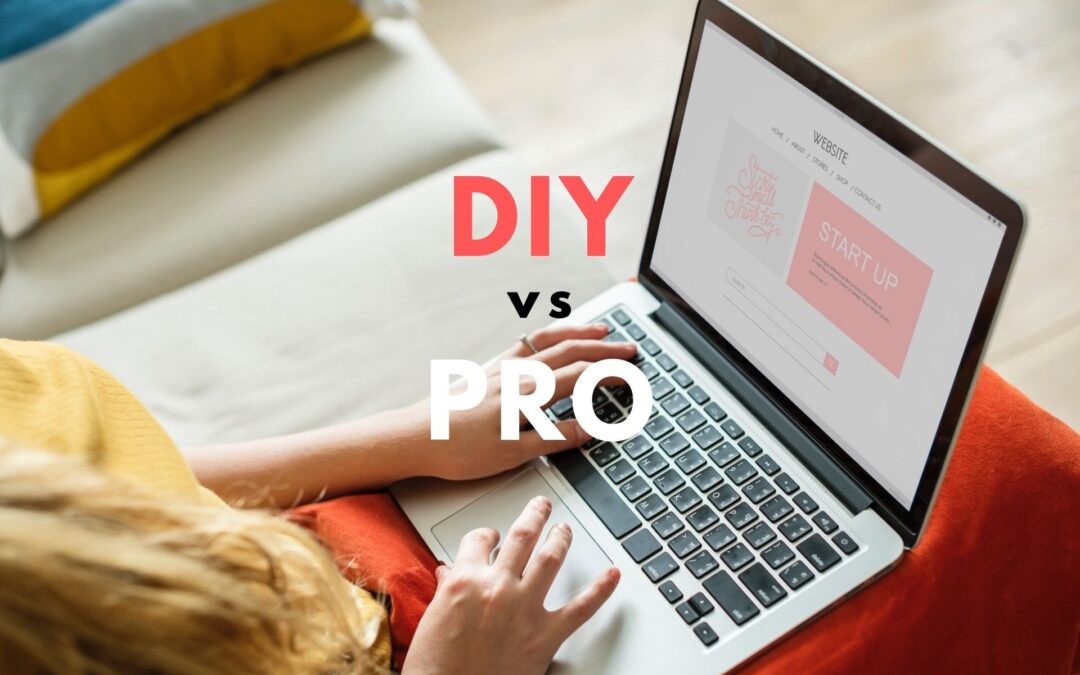
Why DIY Website Builders Are More Trouble Than They’re Worth
We all know a website is essential for any modern business. It’s your shopfront, your business card, and your voice — all rolled into one. Potential clients form first impressions in seconds, and your website plays a massive part in that.
So when platforms promise you can “build a professional website in minutes” for a few pounds a month, it sounds tempting. Why pay someone to build your site when you can do it yourself? But here’s the thing — that shortcut usually leads to a dead end.
If you’re thinking about using a DIY website builder like Wix, Squarespace, Shopify, or something bundled with your hosting provider — read this first.
What Is a DIY Website Builder?
DIY platforms let you build websites using drag-and-drop tools. They’re pitched at beginners, with no coding or design knowledge needed. Choose a layout, pick some fonts, drop in a few images and voilà — instant website.
Sounds ideal, right?
Unfortunately, the reality is very different behind the scenes. These platforms are full of compromises. What looks decent on the surface can be hiding bloated code, slow performance, poor SEO, and a platform that you’re locked into for good.
Let’s break down why DIY website builders aren’t the answer.
1. Your Website Will Look Generic
You’re using pre-built blocks, same as thousands (maybe millions) of other users. Sure, you can tweak colours and fonts — but you’ll hit a wall the moment you want something tailored to your business.
Your website should reflect your brand — not just exist online. Things like layout, navigation flow, and how you position your call-to-actions should all serve a purpose. A good designer builds all that in. DIY platforms can’t.
And if you’re trying to build trust or authority in a competitive industry, looking the same as everyone else won’t cut it.
2. DIY Sites Are Slow and Bloated
Even if you only use a handful of features, the entire platform’s codebase still loads on every page. That means your site is heavier than it needs to be — and slow.
Page speed matters. A lot. People click away if your site takes more than 2 seconds to load. And Google won’t rank you well if your site is slow.
Custom-built websites (like the ones I create) include only what you need — and nothing you don’t. The result? Fast, lean, and optimised performance.
3. You’re Locked In
Once you build a site on a DIY platform, you’re stuck with their system, their hosting, and their rules.
Want to move your site elsewhere? Tough. The code isn’t portable. Your content might be, but you’ll have to start again from scratch.
Also, you’ll spend time learning their tools — which aren’t transferable. That’s wasted effort. With WordPress, for example, what you learn stays useful for years.
When I build a site for you, you own it. It’s portable, future-proof, and totally under your control.
4. Poor SEO Capabilities
If no one can find your site on Google, what’s the point?
SEO (Search Engine Optimisation) is about more than keywords. It’s about structure, speed, semantics, and strategy. DIY builders often fall flat here — either because they limit what you can control, or they don’t support the technical stuff like schema markup, canonical tags, and custom metadata.
Some platforms don’t even let you properly verify your site in Google Search Console. Others make it hard to connect useful tools like email opt-ins, CRM systems or newsletters.
SEO is baked into every site I build. From your headings to your image alt tags, everything is built with both people and search engines in mind.
5. Content Without Direction
Most people build DIY websites by writing content “off the cuff.” Unfortunately, that’s not a winning strategy.
Effective content speaks to two audiences: humans and search engines. Get it wrong, and your visitors bounce. Get it right, and you increase conversions.
Too many DIY sites open with things like “Welcome to our website” as the main headline. It doesn’t say what you do, and it doesn’t help your search ranking. A pro will help you craft meaningful, conversion-friendly content that’s aligned with your goals.
I’ll help guide your message so that your site connects with people — and with Google.
6. No Real Support
When something breaks (and it will), you’ll want help. But support on DIY platforms can be painfully slow, limited to chatbots, or restricted to their knowledge base.
When I build your site, support isn’t a form or a chatbot. It’s me. You get a human who knows your site inside-out — because I built it.
Bonus Warning: Not All “Web Designers” Are Equal
Some so-called designers don’t actually code or build bespoke sites. They rely on drag-and-drop builders like Elementor or WPBakery and present that as “custom development.”
Warning signs:
- No design mock-up process
- Limited flexibility when you ask for a unique feature
- All their portfolio sites look the same
- They’ve only been doing this for a couple of years
If you’re paying professional prices, make sure you’re getting professional work.
The Real Cost of “Free”
Yes, you can build a DIY site. But if it underperforms, costs you leads, or needs replacing six months down the line — it’s not really cheaper, is it?
Instead, talk to someone who can help you get it right the first time. I’m always happy to discuss what’s possible within your budget. Sometimes that means starting small and growing your site over time.
But the key is this: build smart, build well, and build for your audience.
Let’s create something that reflects your values and puts you in control.

